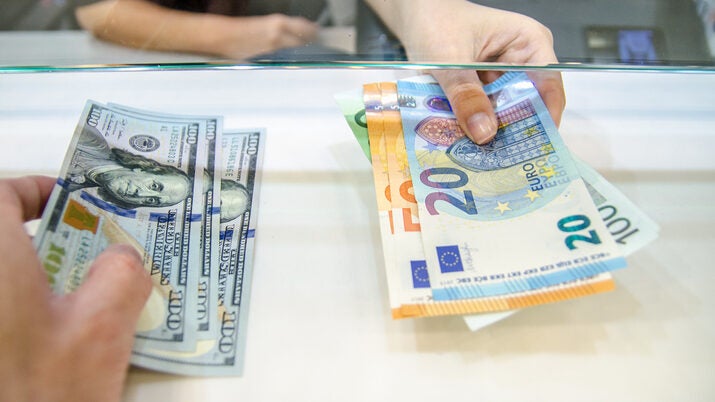The stock market can be a fickle beast, one moment soaring high, the next crashing down. It can be a wild ride, but with take profit orders, traders can take back control and secure their profits.
Imagine the sensation of watching your trades turn a profit and having the confidence to lock in those profits with a well-timed take profit order. With take profit orders, traders can take advantage of the volatile markets and gain a sense of freedom from the fear of loss.
In this article, we will explore the benefits of take profit orders, how to use them, and the risks involved.
Key Takeaways
- Take profit orders help secure profits in trading
- They minimize risk by allowing traders to lock in profits and reduce losses
- Take profit orders enable traders to make informed decisions and take calculated risks
- They also help minimize monitoring time and protect capital by avoiding potential losses
Benefits of T/P
Using Take Profit orders can ensure a profit, minimize risk, and avoid hasty buy/sell decisions, thus providing beneficial advantages for traders.
Take Profit orders provide the opportunity to secure profits and reduce losses while maximizing returns. It is an effective way to lock in profits as soon as the market reaches the pre-determined price.
Take Profit orders also help traders to avoid making decisions based on emotion or impulse. This allows traders to make informed decisions and take calculated risks.
The pre-set order also minimizes the amount of time needed to monitor the market as traders can be alerted when the order is filled.
Furthermore, Take Profit orders are a useful tool for traders who wish to protect their capital. Placing a Take Profit order helps to identify the maximum amount of profit that can be earned on a trade, thus allowing traders to enjoy the freedom of trading without the worries of potential losses.
How to Use
Executing Take Profit orders can enable traders to lock in pre-calculated profits and reduce risk. Setting a Take Profit level is relatively straightforward; traders simply input the desired price level at which their position will be closed.
It is important to note that the Take Profit level should reflect the trader’s risk/reward ratio and account for the spread. Once the Take Profit level is set, the order will be triggered when the market reaches the desired price level.
Managing Take Profit orders is just as important as setting them. Traders should monitor the market to ensure that their order is triggered at the desired price. They may also adjust or cancel the order if the market moves in an unexpected direction.
By using Take Profit orders, traders can improve their risk/reward ratio and secure their profits.
Risks Involved
Despite the potential benefits of Take Profit orders, traders must consider the risks involved. Common mistakes include setting Take Profit orders too close to the current market price or too far away. This could result in either missing out on potential profits or taking smaller profits than desired.
Additionally, traders must ensure that they set appropriate levels for their Take Profit order. If the Take Profit order is set too low, the market could move beyond it without the position being closed at the desired level. Conversely, if the Take Profit order is set too high, the market could move away from the desired level before the order is triggered.
Finally, traders should be aware that Take Profit orders are not guaranteed to be triggered at the desired price level due to market volatility or liquidity issues. Therefore, traders should always consider their risk tolerance when setting Take Profit orders.
Frequently Asked Questions
What is the minimum take profit order amount?
The amount of a Take Profit order is an important aspect of risk management in trading, as it helps traders secure their profits. When establishing a Take Profit order, traders should be aware of the potential risks associated with the order and how they may affect their profit targets.
It is essential to remember that the minimum order amount should be enough to adequately cover the risks associated with the position, while ensuring the trader’s desired profit target is reached. To ensure the desired outcome, traders must rigorously assess the risks of their position and use market data to ascertain an appropriate Take Profit order amount.
By doing so, they can ensure a secure and profitable trading experience.
How long do take profit orders remain active?
Take Profit orders remain active until the price level specified by the trader is reached. These price levels are determined by the trader’s risk management strategy and are designed to secure profits when the market reaches a certain level.
Take Profit orders can be adjusted or cancelled while monitoring the market, providing traders with greater control over their profits. This allows traders to gain better returns from their investments while minimizing the risks associated with trading.
What happens if the market does not reach the take profit level?
Astonishingly, if the market does not reach the Take Profit level, the position will remain open until it is manually closed. When trading with Take Profit, it is important to consider both the profit potential as well as the risks involved.
Risk management should be a top priority as traders attempt to balance their risk and reward. With that said, it is up to the trader to decide when to close a position, as they have the freedom to do so at any time.
Take Profit orders can be a useful tool for those looking to secure their profits, but it is important to understand the risks involved.
Can take profit orders be placed after a position has been opened?
Yes, Take Profit orders can be placed after a position has been opened. This allows traders to adjust their risk management strategy in the face of changing market volatility.
The Take Profit order can be adjusted or cancelled while monitoring the market. This offers traders the flexibility to take profits or reduce losses depending on market conditions.
It is important to be aware that there is still a risk of loss when placing a Take Profit order. Therefore, it is essential to fully understand the extent of exposure to the risk of loss and to use the order responsibly.
What are the differences between take profit and stop loss orders?
Take Profit and Stop Loss orders are similar in that they are both pending orders used to secure profits and limit losses in trading. However, they differ in terms of their risk/reward ratios and market volatility.
For example, in a volatile market, a Take Profit order may secure a larger profit than a Stop Loss order, but it will also incur a higher level of risk as the market price may never reach the Take Profit level.
Conversely, a Stop Loss order will provide a tighter risk/reward ratio, but will also likely result in a smaller profit due to the low market volatility.
Ultimately, it is up to the trader to decide which order best suits their risk appetite and financial goals.
Conclusion
Take Profit orders are a useful tool for traders looking to secure their profits. When used in combination with a short-term strategy and against the trend, the potential benefits can be significant.
However, the risks associated with trading leveraged products should not be ignored and traders should ensure that they are well informed of the risks and consequences of their trading decisions.
The truth of the matter is that the success of Take Profit orders depends heavily on the trader’s strategy and risk management. If used correctly, Take Profit orders can be a great way to limit losses and maximize profits in the forex market.











